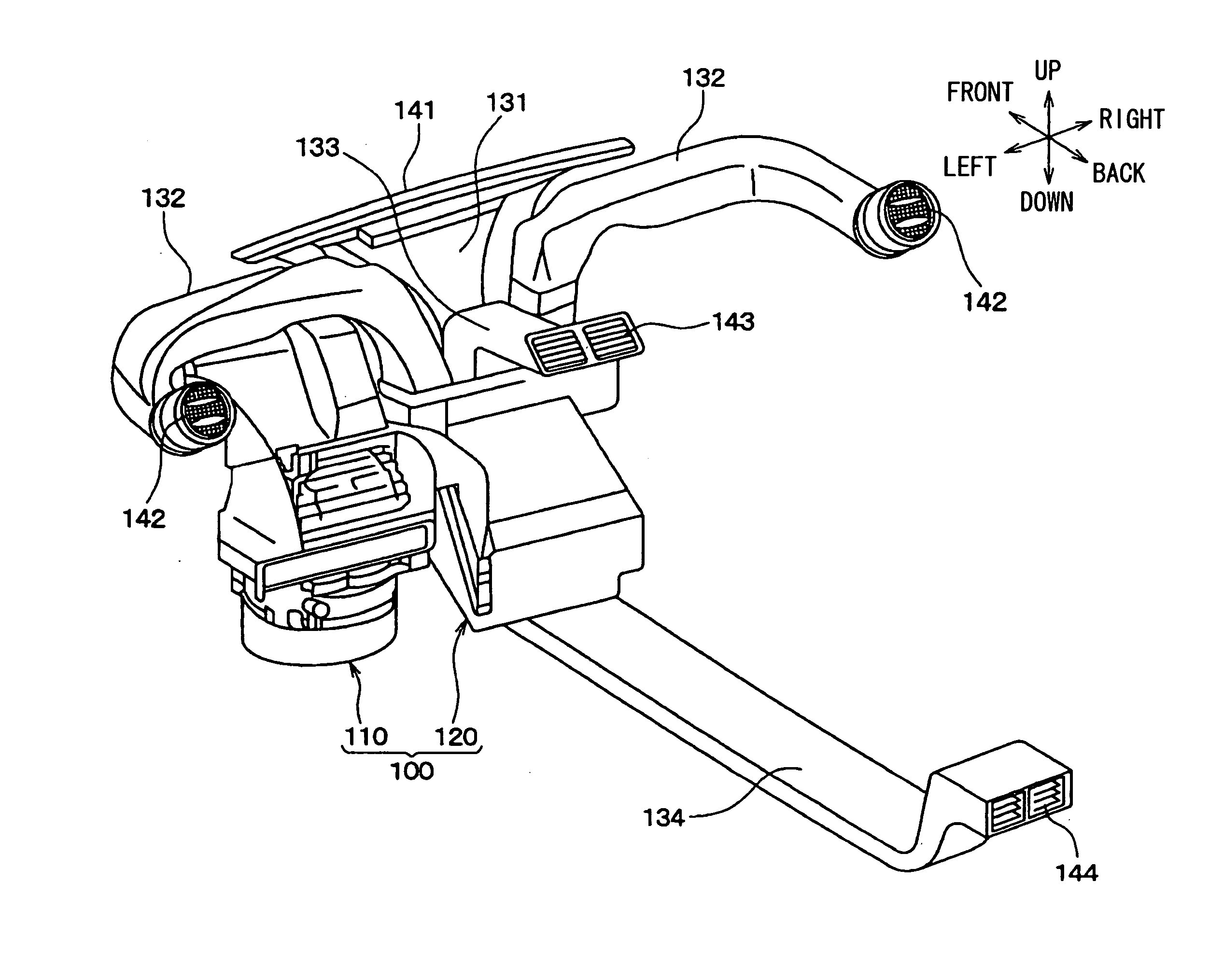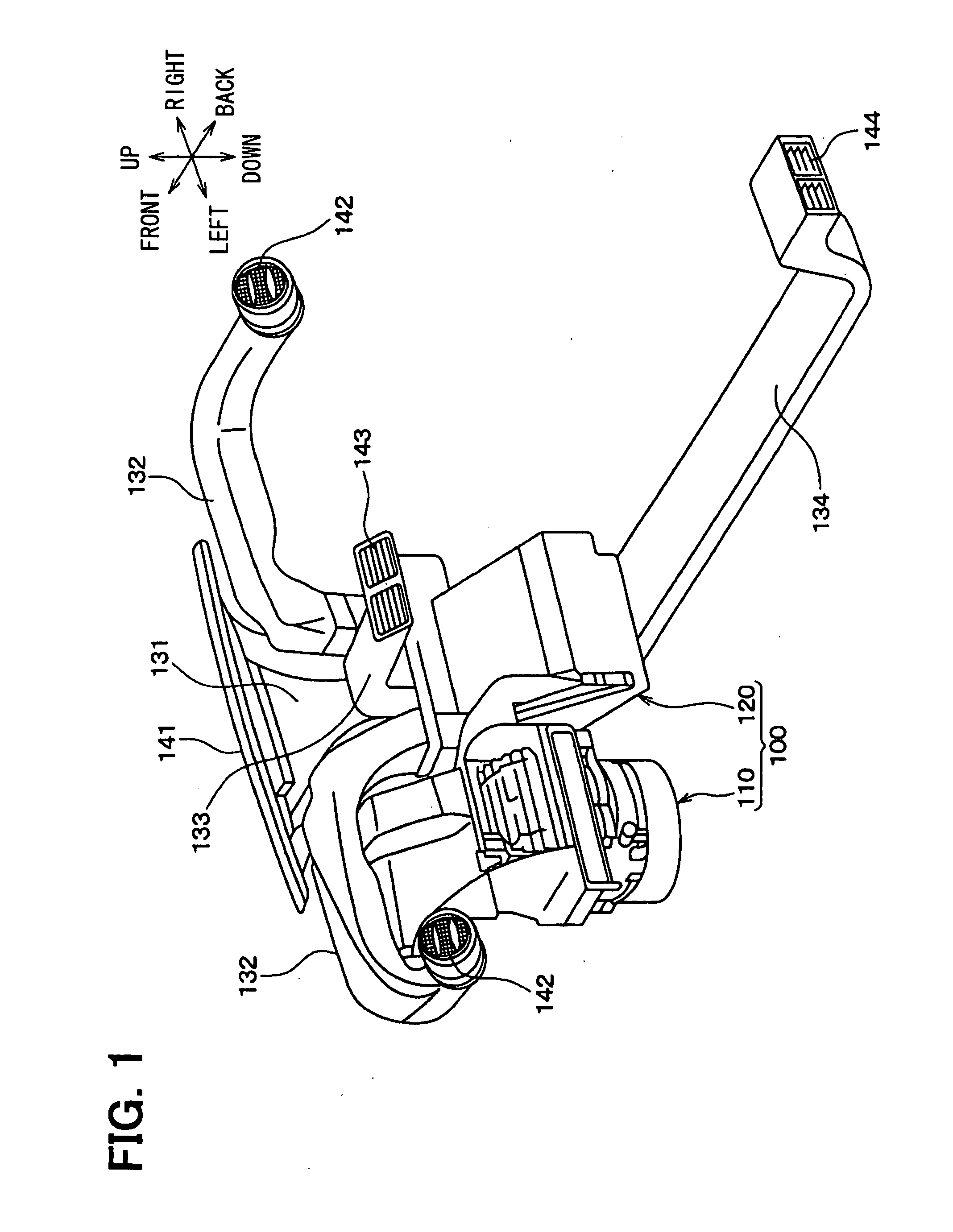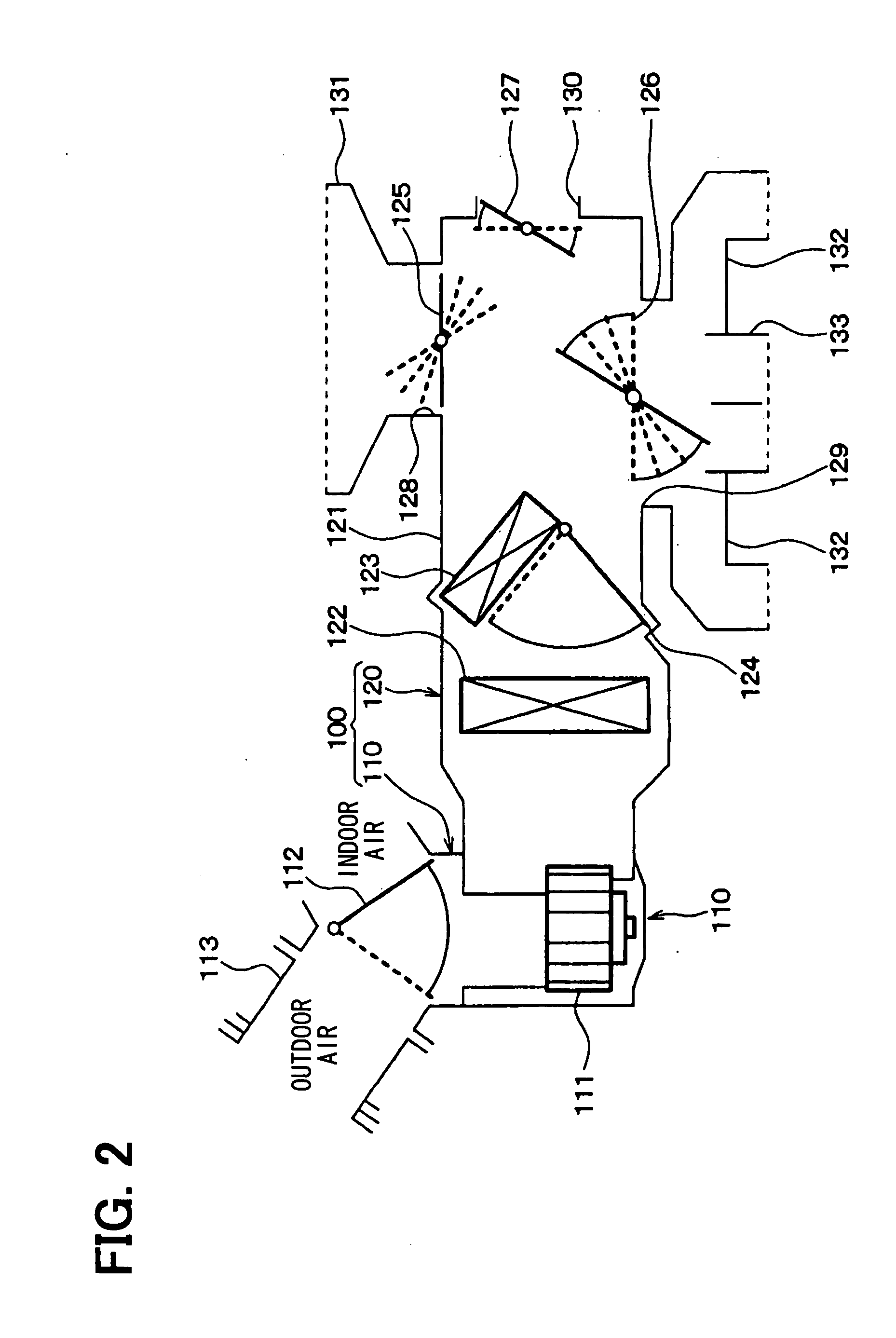Air duct for vehicle air conditioning and air conditioner for vehicle
a technology for air ducts and vehicles, applied in mechanical devices, roofs, transportation and packaging, etc., can solve the problems of noise generation while the blower is blowing, noise is emitted to the vehicle compartment, and there is no specific application example of interference type sound attenuator, so as to reduce the generation of unsteady flow, reduce wind roar, and reduce noise emitted
- Summary
- Abstract
- Description
- Claims
- Application Information
AI Technical Summary
Benefits of technology
Problems solved by technology
Method used
Image
Examples
eighth embodiment
[0217] In this embodiment, the present invention is applied to a side face duct for a vehicle air conditioner. FIG. 22 is a partially-sectional view of the overall portion of a side face duct according to the eighth embodiment. FIG. 23 is a cross-sectional view taken along the line XXIII-XXIII of FIG. 22. In FIGS. 22 and 23, constituent elements identical to those of FIGS. 16 to 21 are designated by the same reference numerals as those of FIGS. 16 to 21.
[0218] As shown in FIG. 22, in the side face duct 132 of this embodiment, a passage dividing wall 2 is installed in the second bending section 3. Also, only a desired one of the outer-periphery-side inner wall surface 3a and the inner-periphery-side inner wall surface 3b of the second bending section 3, e.g., the outer-periphery-side inner wall surface 3a, is outwardly enlarged in this embodiment, as compared with the virtual line. For example, in this embodiment of FIG. 22, the outer-periphery-side inner wall surface 3a is bent app...
ninth embodiment
[0222] In this embodiment, the present invention is applied to a side face duct for a vehicle air conditioner. FIG. 24 is a partially-sectional view of the overall portion of a side face duct according to the ninth embodiment. FIG. 25 is a cross-sectional view taken along the line XXV-XXV of FIG. 24. In FIGS. 24 and 25, constituent elements identical to those of FIGS. 16 to 23 are designated by the same reference numerals as those of FIGS. 16 to 23.
[0223] As shown in FIG. 24, the side face duct 132 of this embodiment is shaped such that a first bending section 41, an upstream-side straight section 4, a second bending section 3, and a third bending section 42 constituting a duct section arranged downstream of the second bending section 3 are sequentially connected to one another. The side face duct 132 of this embodiment does not include the downstream-side straight section 5, different from the above-described embodiments.
[0224] In this embodiment, the length L7 of the retaining p...
tenth embodiment
[0226] In this embodiment, the present invention is applied to a side face duct for a vehicle air conditioner. FIG. 26 is a partially-sectional view of the overall portion of a side face duct according to the tenth embodiment. FIG. 27 is a cross-sectional view taken along the line XXVII-XXVII of FIG. 26. In FIGS. 26 and 27, constituent elements identical to those of FIGS. 16 to 25 are designated by the same reference numerals as those of FIGS. 16 to 25.
[0227] In this embodiment, the second bending section 3 is shaped such that the outer-periphery-side inner wall surface 3a is outwardly enlarged from a portion 45 arranged at an intermediate position in an air flow direction. Here, the portion 45 is located between the upstream-side straight section 4 and the second bending section 3.
[0228] In the second bending section 3, the outer-periphery-side air passage 6 is misaligned (offset) from the inner-periphery-side air passage 7 in a height direction by a height ΔH1.
[0229] Accordingl...
PUM
 Login to View More
Login to View More Abstract
Description
Claims
Application Information
 Login to View More
Login to View More - R&D
- Intellectual Property
- Life Sciences
- Materials
- Tech Scout
- Unparalleled Data Quality
- Higher Quality Content
- 60% Fewer Hallucinations
Browse by: Latest US Patents, China's latest patents, Technical Efficacy Thesaurus, Application Domain, Technology Topic, Popular Technical Reports.
© 2025 PatSnap. All rights reserved.Legal|Privacy policy|Modern Slavery Act Transparency Statement|Sitemap|About US| Contact US: help@patsnap.com



